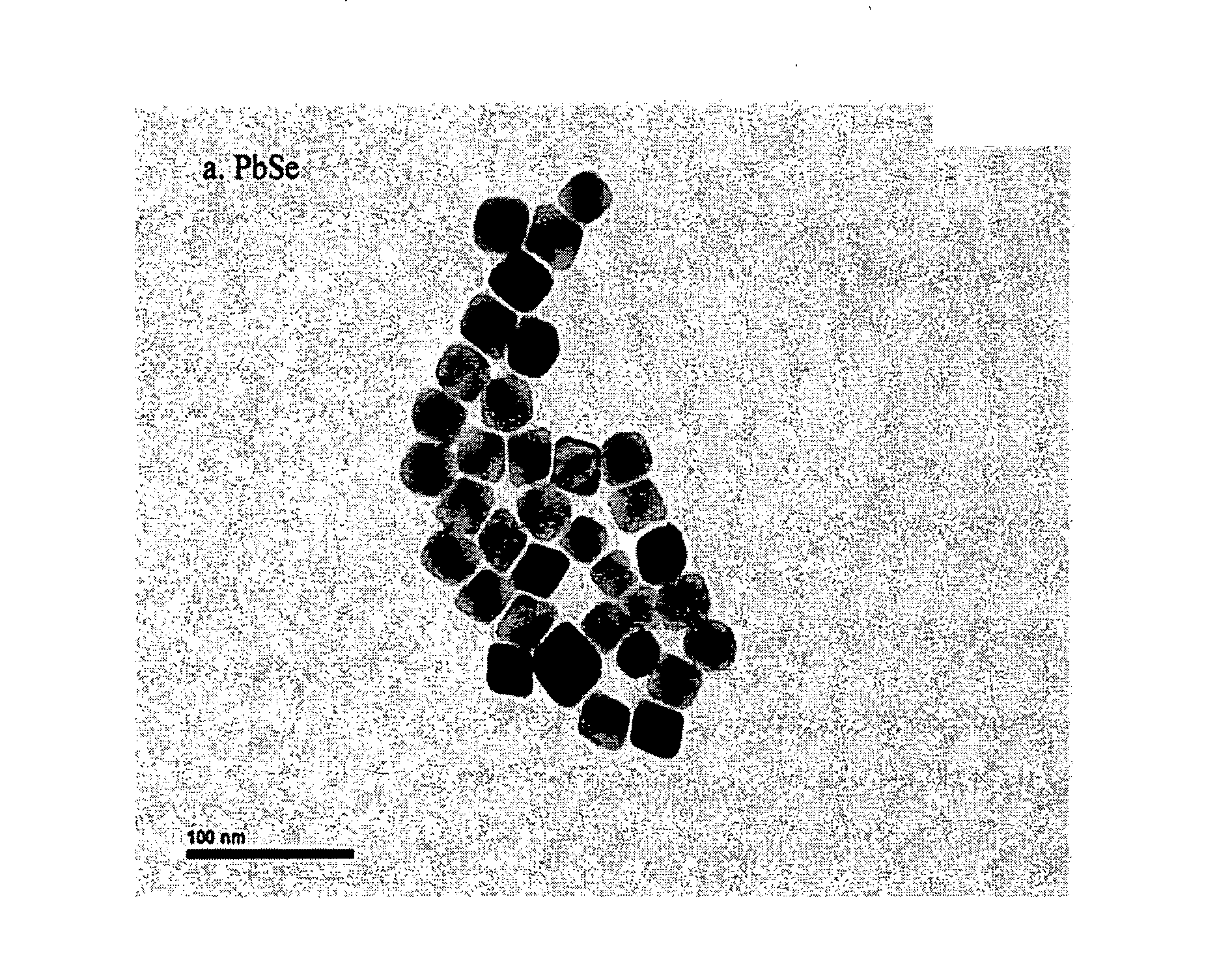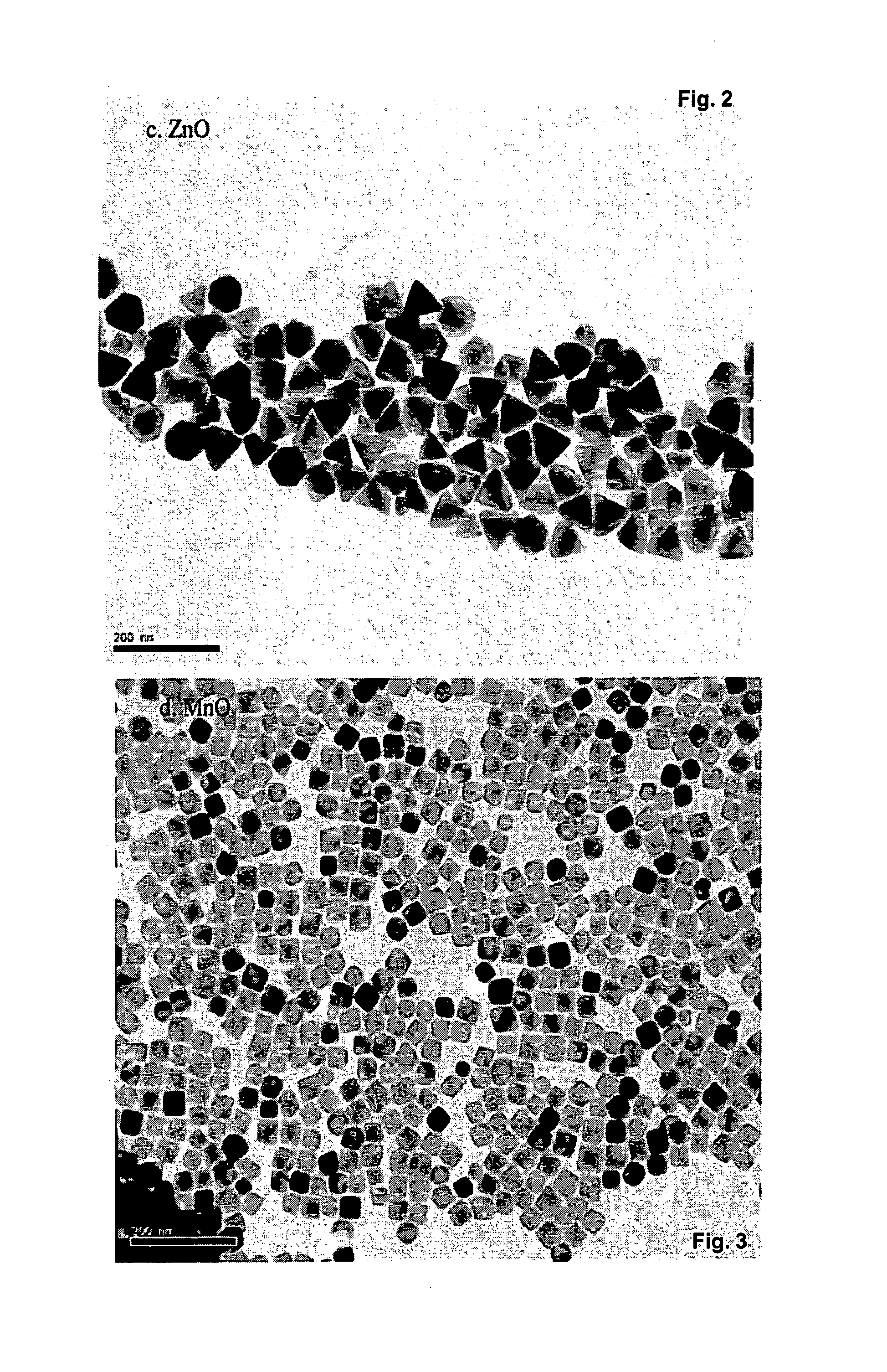Methods of forming a nanocrystal
a nanocrystal and nanocrystal technology, applied in the field of nanocrystal forming, can solve the problems of surface defects, affecting the surface properties of nanocrystals,
- Summary
- Abstract
- Description
- Claims
- Application Information
AI Technical Summary
Benefits of technology
Problems solved by technology
Method used
Image
Examples
example 1
Synthesis of CdSe Quantum Dots
[0070]In a typical reaction, 3 mmol (384 mg) CdO was dissolved in 12 mmol (3.84 ml) oleic acid at 260° C. to form a homogeneous solution. After cooling down to room temperature, 30 ml hexane and 3 ml 1M TOP-Se solution were added into the solution. The solution was degassed by bubbling N2 into the solution for 15 mts. It is subsequently transferred to Parr 4590 reactor, and quickly heated to 180° C. under vigorous stirring. The solution was maintained at this temperature for a duration which can range from 10 mts to 1 hour, and aliquots at different times were taken out for photoluminescence (PL) monitoring. FIG. 9 shows a graph illustrating PL spectra of CdSe QDs. High quality CdSe QDs were obtained. and the Full Width at Half Maximum (FWHM) of its luminescent spectra (˜30 nm) and quantum yield obtained were the same as for QDs prepared in ODE under 1 atm. This demonstrates that CdSe QDs formed via the solvothermal method are monodisperse with regard t...
example 2
Synthesis of CdTe Quantum Dots
[0071]In a typical reaction, 3 mmol (384 mg) CdO was dissolved in 12 mmol (3.84 ml) oleic acid at 260° C. to form a homogeneous solution. After cooling down to room temperature, 30 ml hexane and 3 ml 1M TOP-Te solution were added into the solution. The solution was degassed by bubbling N2 into the solution for 15 minutes. It is subsequently transferred to Parr 4590 reactor, and quickly heated to 180° C. under vigorous stirring. The solution was maintained at this temperature for a duration which can range from 20 minutes to 60 min, and aliquots were taken out for photoluminescence (PL) monitoring. FIG. 10 depicts a graph illustrating PL spectra of CdTe QDs.
example 3
Synthesis of Binary Metal Oxide ZnO
[0072]In a typical experiment, 3.0 mmol ZnO was dissolved in 7.5 mmol oleic acid at 260° C. to form a clear solution. After it was cooled down to room temperature, 18 ml hexane and 6 mmol oleylamine were added, then it was transferred to 100 mL Parr reactor 4950 and purged with N2 gas. The mixture was quickly heated to 320° C. under stirring and maintained at the same temperature for 30 minutes. The reaction was then stopped by simply removing the heat and cooling down. The final product was purified by a simple centrifugation dispersion process, i.e. the precipitated nanocrystals can be collected and dried or be re-dissolved in an organic solvent such as hexane for storage. FIG. 2 shows TEM images of binary metal oxide prepared by the solvothermal method of the invention.
PUM
| Property | Measurement | Unit |
|---|---|---|
| pressure | aaaaa | aaaaa |
| pressure | aaaaa | aaaaa |
| boiling point | aaaaa | aaaaa |
Abstract
Description
Claims
Application Information
 Login to View More
Login to View More - R&D
- Intellectual Property
- Life Sciences
- Materials
- Tech Scout
- Unparalleled Data Quality
- Higher Quality Content
- 60% Fewer Hallucinations
Browse by: Latest US Patents, China's latest patents, Technical Efficacy Thesaurus, Application Domain, Technology Topic, Popular Technical Reports.
© 2025 PatSnap. All rights reserved.Legal|Privacy policy|Modern Slavery Act Transparency Statement|Sitemap|About US| Contact US: help@patsnap.com



